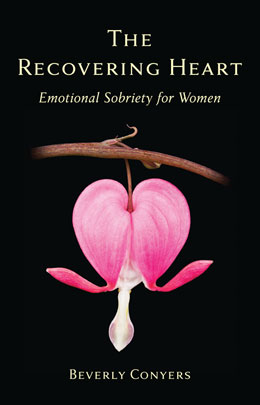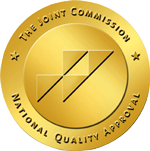
"Healing our self requires us not only to build self-knowledge, but also to act."

Other titles you may like.

12 Smart Things to Do
When the Booze and Drugs Are Gone
Visit Recovery Road to view and
listen to all the episodes.
Episode 89 -- February 18, 2021
The Power of Action for Healing and Hope
Despite the uncertainties and distractions of the past year, we're finally sober and drug-free. Our old, destructive lifestyles are fading into the past and now we are people on the path of recovery. What an amazing gift this is. So why aren't we happier? As sobriety takes hold and our heads start to clear, a wide range of emotions can begin to emerge—feelings that we used to dull or avoid or alter with chemicals. Yet to stay sober, and to grow and flourish as people, we must engage in healing and take responsibility for all these emotions that our addictions caused us to neglect.
In her book, The Recovering Heart: Emotional Sobriety for Women, Beverly Conyers gives readers of all genders wisdom for the journey of recovery from alcoholism or other addictions. In this excerpt, she underscores the links between reflection and action in the process of healing. Action is the antidote to habitual helplessness and poor self-image. The path to reclaiming the power we lost to trauma and addiction is through the large and small choices that help us direct and focus our energies and take control of our lives.
This excerpt has been edited for brevity.
The Power of Action
Much of our discussion of healing has focused on our thoughts and emotions. But as we know from our understanding of trauma, the mind and body are closely linked. What affects one affects the other. Mental anguish can lead to serious physical ailments. Physical illness can lead to mental distress.
That's why emotional healing requires us to pay attention to all aspects of our life, taking a holistic approach to our well-being. A crucial part of well-being is the belief that we can accomplish things that are important to us—something psychologists call self-efficacy. People with a high degree of self-efficacy approach challenges with the attitude that they are up to the task. They fully commit themselves to doing what needs to be done, and if the results of their efforts are disappointing, they quickly bounce back.
People with low self-efficacy, on the other hand, don't believe in their own ability to succeed. As a result, they tend to avoid challenges and focus on their personal flaws and negative outcomes. "See? I knew I couldn't do it," they say. Each unmet challenge reinforces their negative self-image. Each disappointment triggers the old message that "I'm not good enough." Inevitably, the expectation of failure becomes a self-fulfilling prophecy.
The good news is that each of us has the potential to build self-efficacy. We do it by taking action.
What kinds of actions are we talking about? The answer varies, depending on our circumstances and emotional and physical health. But in general, helpful actions are those positive things big and small that we do to build self-worth. Maybe we're feeling lonely and unlovable. We could resolve to smile at five people that day. (Research has shown that smiles are "contagious"—when we give one, we almost always get one back.) We could go to an extra peer recovery meeting. We could take a walk and really appreciate the beauty of nature. We could start a gratitude journal to remind ourselves of all we have to be grateful for.
Maybe we're feeling depressed about our low-paying job. We could sign up for a training program to expand our career options and then work our hardest to succeed in the program. We could ask our boss for a raise and clearly explain all the reasons we deserve one. We could look for a better-paying job and get help from a career-help center to improve our chances of getting one.
The point is, healing our self requires us not only to build self-knowledge, but also to act. Those of us with low self-worth often find it very hard to take action because we've already pictured a negative outcome. We're defeated before we even start. This is when it can be helpful to fall back on one of my favorite Twelve Step slogans: "Fake it till you make it." In other words, we can act in our own best interest even if those actions don't yet feel natural. This technique works because, as we saw earlier, emotions trigger thoughts and thoughts trigger emotions. Doing something positive, even when we don't feel like doing it, leads to positive thoughts about our self. We smile at someone and think, "I'm a friendly person." That person smiles back or is friendlier toward us, and we feel more likeable. We sign up for a class and give it our all and think, "I'm doing something to make my life better." We go for a walk instead of watching TV and think, "I'm taking steps to improve my health." Each positive thought triggers a positive feeling.
Over time, actions that once felt unnatural get easier through the power of positive reinforcement. As we get in the habit of doing positive things for our self, we gradually improve our own well-being.
Sometimes it's hard to know what actions will help us move forward in our recovery. Problems can be overwhelming, and there may be so many sources of stress that we can't cut through the confusion. Nevertheless, there is always something we can do. There is always some small step we can take. As the clergyman, Edward Everett Hale, famously said, "I cannot do everything, but I can do something. And I will not let what I cannot do interfere with what I can do."
Taking positive action—such as going to meetings, getting a sponsor, consulting a therapist, and working through our traumatic past—helps us build self-worth. But to fully heal, we eventually need to look beyond trauma and addiction and take steps toward creating a personally meaningful, satisfying life. To guide us in our efforts, the Substance Abuse and Mental Health Services Administration (SAMHSA) has launched a campaign called the Eight Dimensions of Wellness, available on the SAMHSA website. The program doesn't tell us what to do. Instead, it highlights areas of human endeavor that lead to well-being:
- Emotional—Coping effectively with life and creating satisfying relationships
- Environmental—Good health by occupying pleasant, stimulating environments that support well-being
- Financial—Satisfaction with current and future financial situations
- Intellectual—Recognizing creative abilities and finding ways to expand knowledge and skills
- Occupational—Personal satisfaction and enrichment from one's work
- Physical—Recognizing the need for physical activity, healthy foods, and sleep
- Social—Developing a sense of connection, belonging, and a well-developed support system
- Spiritual—Expanding our sense of purpose and meaning in life
The campaign defines wellness as "not the absence of disease, illness or stress, but the presence of purpose in life, active involvement in satisfying work and play, joyful relationships, a healthy body and living environment, and happiness." It goes on to say that wellness "incorporates the mental, emotional, physical, occupational, intellectual, and spiritual aspects of a person's life. Each aspect of wellness can affect overall quality of life, so it is important to consider all aspects of health."
Ultimately, the campaign tells us, we have the power to improve the quality of our life through the actions we take. For our life really is the totality of the choices we make every day. When we choose to take care of our emotional and physical health, take steps to develop our talents and abilities, search for purpose and meaning in life, and work to create satisfying relationships, our life inevitably becomes healthier and more satisfying.
In many ways, life is the process of becoming our best possible self. As long as we are willing to learn and grow, we continually move closer to reaching our full potential. We never reach it, because human perfection is impossible. But the richness of life lies in the journey.
About the Author:
Beverly Conyers began writing about addiction and recovery in response to her daughter's struggles with substance abuse. The author of Addict in the Family: Stories of Loss, Hope, and Recovery, Find Your Light: Practicing Mindfulness to Recover from Anything, and Everything Changes: Help for Families of Newly Recovering Addicts, she lives in Massachusetts, where she teaches in a community college. She continues to learn about addiction and recovery and increasingly focuses on spiritual growth.
© 2013 by Hazelden Foundation
All rights reserved


